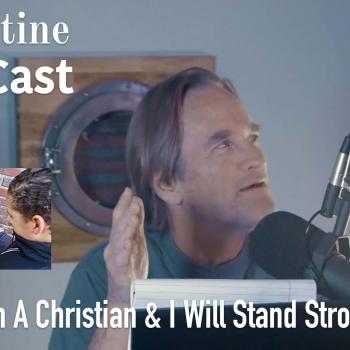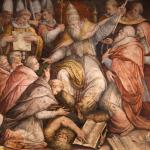
Did you know that Augustine wrote a catechism for a Roman tribune living in Africa? In this episode of 5 Minutes in Church History, Dr. Stephen Nichols discusses Augustine’s 420 A.D. book, the Enchiridion.
Augustine of Hippo wrote many books, including his Confessions and City of God. One of his somewhat lesser-known works is a book from the year 420 called the Enchiridion. Augustine was around sixty-six years old at the time he wrote it, and he had been a Christian for thirty-five years. The Enchiridion is a short handbook or manual. Sometimes it’s called Augustine’s Catechism or his treatise on faith, hope, and love or faith, hope, and charity. I’d like to simply call it Augustine’s “Handbook on Life.”
The book is addressed “to my dearest son, Laurence.” Laurence was not Augustine’s actual son; Augustine is referring to Laurence as a sort of spiritual son or a son in the faith. We don’t know much about Laurence. He was a Roman official, a tribune, living in Africa, and he was a man of some importance and some stature in that day. He had written to Augustine to ask a significant question: How can Christian doctrine be summarized? Augustine takes the question and he sort of says, “Well, Laurence, let me help you articulate the question you’re really asking.” And the question is this: How can God be worshiped? This tells us a lot about what Augustine thinks of doctrine and what he thinks doctrine ultimately leads us to. And not only is the worship of God a way to talk about theology, it is also for Augustine a way to talk about life. So, what we are after here in this little book is,
“How shall we then live? How shall we worship God?”
Augustine answers,
“God is to be worshiped with faith, hope, and charity.”
Now, the majority of the book is about faith. We worship God based on what we believe in and what we believe about God. In order to unfold this idea, Augustine walks Laurence through the Apostles’ Creed. At one point, he talks about faith in Christ the Redeemer and says we are under the wrath of God because of original sin:
“We are the enemies of God and God is angry at us.”
And then Augustine says this:
“When God is said to be angry, this does not mean that his mind was disturbed, like the mind of a person who is angry, but his vengeance, which is nothing but just, is, by an extension of meaning, called his anger.”
We are under the wrath of God, the vengeance of God because we are sinners. Then he says this:
“So our reconciliation with God by a mediator and our reception of the Holy Spirit to make us children of the one to whom we were enemies . . . this is the grace of God through our Lord Jesus Christ.”
This is what we believe; this is where our faith lies.
Then we have hope. When Augustine turns to hope, he turns to the Lord’s Prayer. The Lord’s Prayer gives expression to our hope, our hope for our needs and ultimately, our hope for the kingdom of God. As the Lord’s Prayer ends, “For thine is the kingdom and the power and the glory forever, amen.” Then Augustine ends with charity. We live in love to God and in love to others. And that, according to Augustine, is a handbook for life.
Stay connected with 5 Minutes in Church History by getting the weekly podcast on iTunes, SoundCloud, or via RSS. You can also subscribe to the blog via RSS and follow us on Twitter and Facebook.
(This podcast is by Ligonier Ministries. Discovered by e2 media network and our community — copyright is owned by the publisher, not e2 media network, and audio is streamed directly from their servers.)















